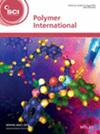求助PDF
{"title":"Wet chemical synthesis of nanohydroxyapatite within poly(sodium sulfonated butylene fumarate-co-acrylic acid) as bone scaffold: effects of sulfonate and carboxylic acid groups","authors":"Nadia Mahmoudzadeh, Hadi Shirali, Faramarz Afshar Taromi","doi":"10.1002/pi.6738","DOIUrl":null,"url":null,"abstract":"<p>This study investigates the synthesis, nucleation and modification of biodegradable poly(sodium sulfonated butylene fumarate-<i>co</i>-acrylic acid)/hydroxyapatite nanocomposite scaffolds for bone tissue engineering, with a focus on the effects of incorporating hydrophilic sulfonate and carboxylic acid groups. Poly(butylene fumarate) was sulfonated at varying degrees and used to form nanocomposites through <i>in situ</i> nucleation of nanohydroxyapatite (nHA) in a simulated body fluid solution. Critical parameters such as water absorption, swelling behavior, mechanical properties, nanoparticle dispersion and biocompatibility were evaluated. Water uptake ratios ranged from 2.72 to 6.88 g g<sup>−1</sup>, while compressive modulus values increased up to 25.9 times compared with the corresponding homopolymers, demonstrating improved mechanical stability. Despite the formation of over 80% nanoparticles, well-distributed nHA, with sizes averaging 39 ± 13 nm, was achieved through the incorporation of sulfonated groups, preventing nanoparticle agglomeration within the scaffold matrix. Additionally, the scaffolds supported human dermal fibroblast adhesion and proliferation, with cell viability remaining high throughout the culture period. These results suggest that the developed nanocomposite scaffolds offer enhanced biocompatibility, mechanical strength and osteogenic potential, making them promising candidates for bone tissue regeneration applications. © 2024 Society of Chemical Industry.</p>","PeriodicalId":20404,"journal":{"name":"Polymer International","volume":"74 5","pages":"434-443"},"PeriodicalIF":3.6000,"publicationDate":"2024-12-22","publicationTypes":"Journal Article","fieldsOfStudy":null,"isOpenAccess":false,"openAccessPdf":"","citationCount":"0","resultStr":null,"platform":"Semanticscholar","paperid":null,"PeriodicalName":"Polymer International","FirstCategoryId":"92","ListUrlMain":"https://scijournals.onlinelibrary.wiley.com/doi/10.1002/pi.6738","RegionNum":4,"RegionCategory":"化学","ArticlePicture":[],"TitleCN":null,"AbstractTextCN":null,"PMCID":null,"EPubDate":"","PubModel":"","JCR":"Q2","JCRName":"POLYMER SCIENCE","Score":null,"Total":0}
引用次数: 0
引用
批量引用
Abstract
This study investigates the synthesis, nucleation and modification of biodegradable poly(sodium sulfonated butylene fumarate-co -acrylic acid)/hydroxyapatite nanocomposite scaffolds for bone tissue engineering, with a focus on the effects of incorporating hydrophilic sulfonate and carboxylic acid groups. Poly(butylene fumarate) was sulfonated at varying degrees and used to form nanocomposites through in situ nucleation of nanohydroxyapatite (nHA) in a simulated body fluid solution. Critical parameters such as water absorption, swelling behavior, mechanical properties, nanoparticle dispersion and biocompatibility were evaluated. Water uptake ratios ranged from 2.72 to 6.88 g g−1 , while compressive modulus values increased up to 25.9 times compared with the corresponding homopolymers, demonstrating improved mechanical stability. Despite the formation of over 80% nanoparticles, well-distributed nHA, with sizes averaging 39 ± 13 nm, was achieved through the incorporation of sulfonated groups, preventing nanoparticle agglomeration within the scaffold matrix. Additionally, the scaffolds supported human dermal fibroblast adhesion and proliferation, with cell viability remaining high throughout the culture period. These results suggest that the developed nanocomposite scaffolds offer enhanced biocompatibility, mechanical strength and osteogenic potential, making them promising candidates for bone tissue regeneration applications. © 2024 Society of Chemical Industry.
纳米羟基磷灰石在聚(磺化富马酸丁二钠-共丙烯酸)内作为骨支架的湿化学合成:磺酸基和羧酸基的影响
本研究研究了可生物降解的聚(磺化富马酸丁二钠-共丙烯酸)/羟基磷灰石纳米复合骨组织工程支架的合成、成核和改性,重点研究了掺入亲水性磺酸基和羧酸基的效果。聚富马酸丁烯在不同程度上磺化,并在模拟体液溶液中通过纳米羟基磷灰石(nHA)的原位成核形成纳米复合材料。对其吸水率、溶胀性能、力学性能、纳米颗粒分散性和生物相容性等关键参数进行了评价。吸水率从2.72到6.88 g g−1不等,而压缩模量值与相应的均聚物相比增加了25.9倍,显示出更好的机械稳定性。尽管形成了超过80%的纳米颗粒,但通过加入磺化基团,防止纳米颗粒在支架基质内团聚,实现了均匀分布的nHA,平均尺寸为39±13 nm。此外,支架支持人真皮成纤维细胞粘附和增殖,在整个培养期间细胞活力保持较高。这些结果表明,所开发的纳米复合支架具有增强的生物相容性,机械强度和成骨潜力,使其成为骨组织再生应用的有希望的候选材料。©2024化学工业学会。
本文章由计算机程序翻译,如有差异,请以英文原文为准。





 求助内容:
求助内容: 应助结果提醒方式:
应助结果提醒方式:


